To frizz or not to frizz? That is the question!
Your wash day happened yesterday, or maybe a few days ago. You wake up with voluminous curls that have expanded in comparison to your day 1 hair. Your curls are still defined and healthy looking, but you look in the mirror and see some frizz. What do you do?
You can embrace your healthy frizz. In fact, healthy frizz is completely normal, and it can belong in your curly hair routine, if you want it to.
According to Lorraine Massey, “frizz is a curl waiting to happen”, and “a curl asking for moisture”. As followers of the Curly Girl Method, many of us are wearing our healthy frizz-free curls with pride, and this is a huge achievement. But in many cases, healthy frizz is acceptable and completely normal as well. To discuss this topic and share useful tips, I reached out Lorraine Massey herself, and curl specialist Saulo O’Deoraín, from The Curly Look salon in Dublin.
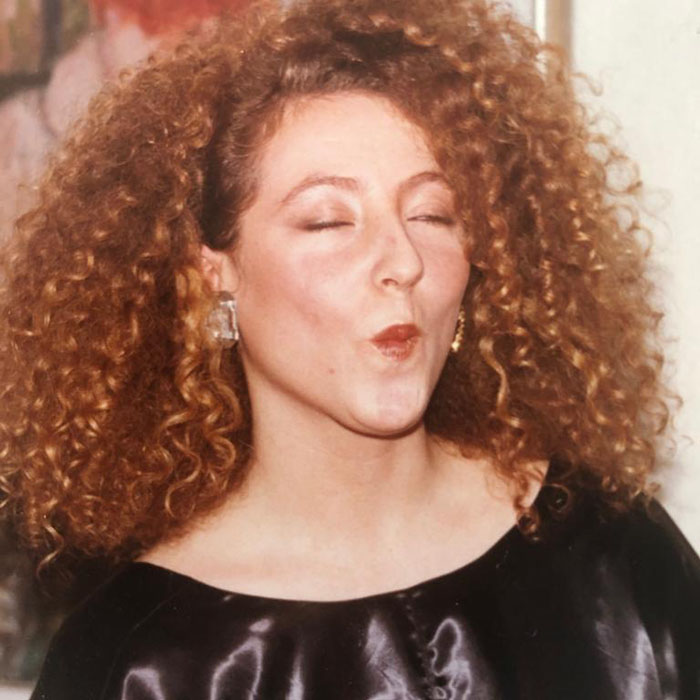
Young Lorraine, with healthy frizz.
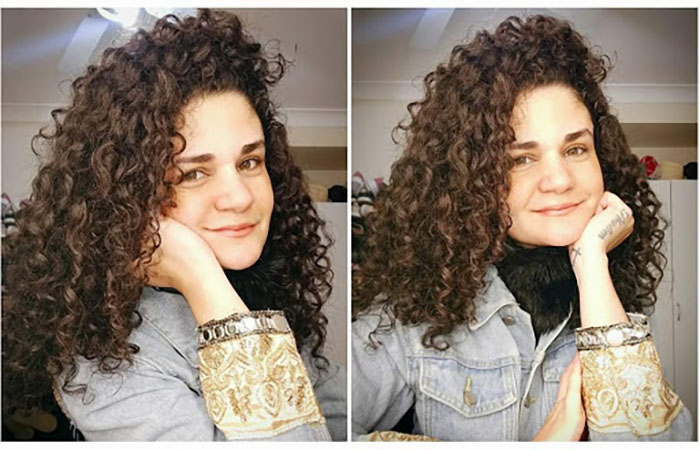
My healthy frizz.
Are there situations when frizz is considered healthy?
Lorraine shares: Once you become an advanced curly girl or guy and acclimate yourself to your curly ecosystem, frizz doesn’t have to be a dirty word anymore. A whole head of voluminous curls is greater than the sum of its parts. Not only does the hair benefit from healthy frizz, but so do you, because it means that you can stop being a “helicopter curly girl” who looks for the perfect curl every day. By understanding what functional frizz is with a bit of volume and a few days of product evaporation, you can have a new perspective and look. Many people say that they like their hair when their curls are more open, a few days after washing. I do too!
Saulo shares: Frizz is a state and not a permanent condition! It’s important to always keep in mind that curls are meant to move and be touchable and have what many call “functional frizz”. This is part of the whole canvas that is curly hair and embracing imperfection as an agent of balance is healthy and absolutely curl friendly. It’s also important to highlight that volume and frizz are not necessarily the same thing. When you get to know your curls from all different sides, you will appreciate your hair more expanded as a way of expression.
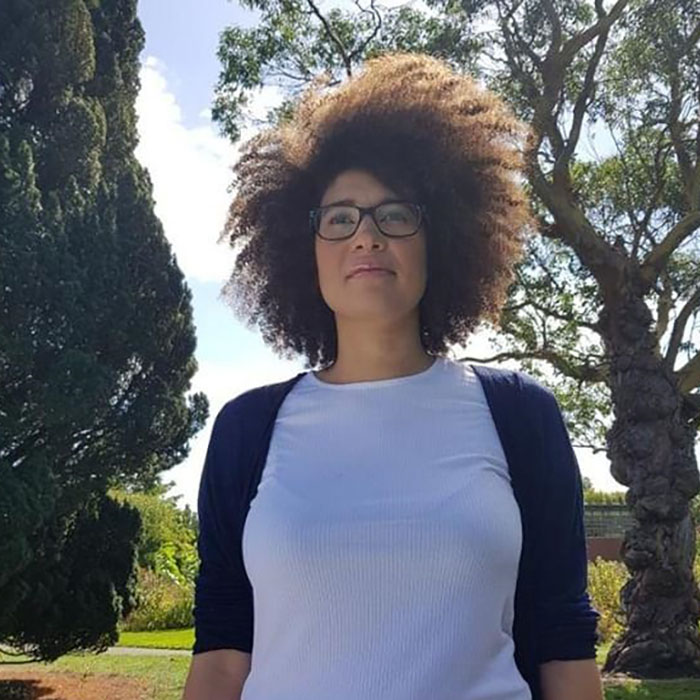
Photo courtesy of Saulo.
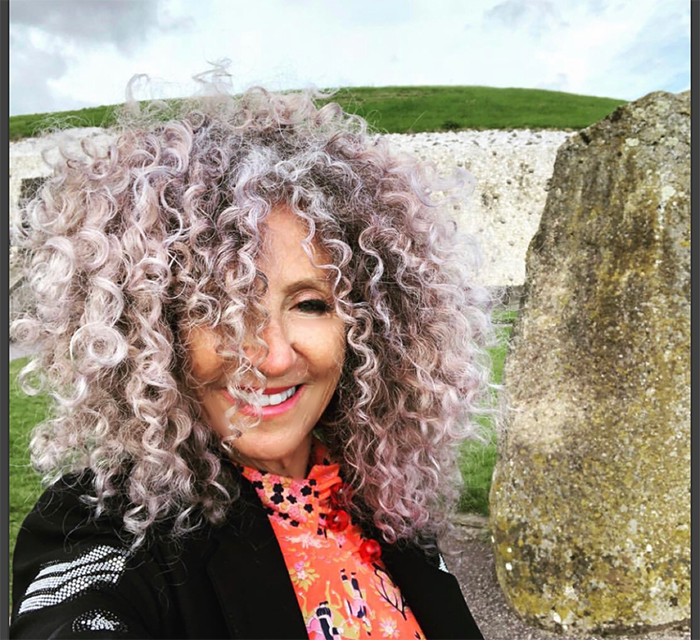
Frizz is a theory of relativity.
How can we identify the difference between frizz that is healthy and frizz that is unhealthy?
Lorraine says: Unhealthy frizz is a result of curls being constantly changed, disrupted and bombarded by major heat and chemicals. Often, I think it stems from childhood hair trauma and negative hair experiences. The fact that we can’t control frizz is the reason why so many women do weekly “blowfries”, chemically straighten their hair or choose wigs/weaves, hoping that the frizz will be obedient and silenced into a “straight-jacket prison”. In fact, this unwanted frizz and the curly girls and boys who have a predisposition to it, are responsible for keeping the hair care industry in the billion-dollar range in the USA alone.
There is a big difference between healthy defined frizz and unhealthy frizz from outside impositions and damage. We can distinguish healthy frizz from unhealthy frizz depending on the varying degrees of hydration or dehydration within the hair strands. For example, my curls have been on the Curly Girl Method for many years, and I felt that they reached the level of hydration I wanted when I first started my curl journey. As a result, I craved volume and expansion. That is what we call “hygral fatigue”. So, I started using less product: “hair traffic control”. This allowed my curls to stay defined, not closed and frozen, but open and expanded, appearing freer and lighter.
Saulo says: Normalizing frizz really is very important because hair strands are constantly being renewed. It’s also important to highlight that excessive frizz is mainly caused from over-manipulation, excessive styling/diffusing, product build and color abuse. Unhealthy frizz is caused by prolonged lack of moisture, causing dullness and hair that feels quite brittle at touch. As a natural pattern from nature, curls need to be perceived as a product of nature that doesn’t need to be controlled but enhanced.
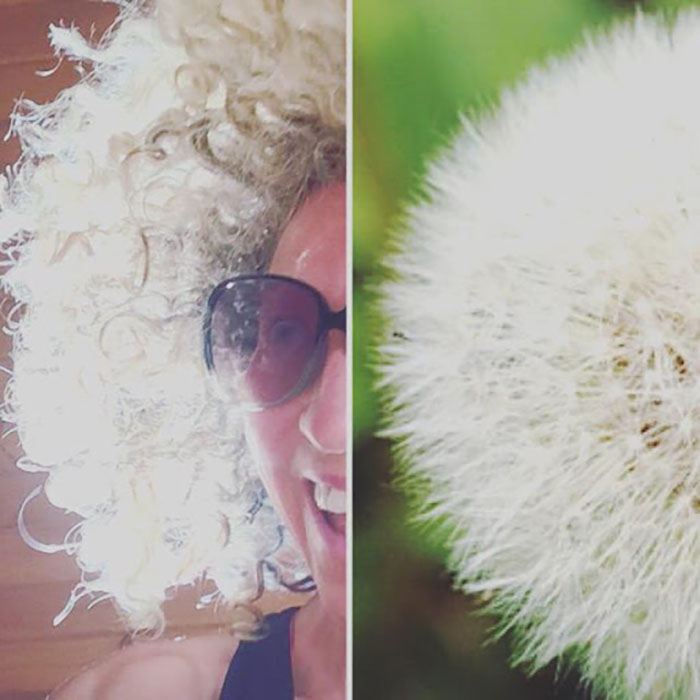
Lorraine’s healthy frizz.
What are some practical tips for embracing (rather than shaming”> healthy frizz, and using it as a tool for volume?
Tips from Lorraine: Disrupting curls and routines may not be for everyone. I fully admit that it has taken me this long to love my hair when it reaches an acceptable voluminous frizzy expansion. I prefer my curls bigger with a slight halo a lot more than when my curls were overly weighted with products, separated and contained. Now they show more of their true nature and personality, and I don’t stress over “special occasions”. I get a lot more compliments when the curls are out and about, as opposed to small and contracted.
I also know that my curls are a conditioner away from not being frizzy, if I choose.
It’s like tuning in to your hair frequency; you can turn the volume up or down. It is YOUR choice, depending on your product choice, applications and technique.
Make sure that your curls are not weighted down or lethargic due to build-up of microplastics and silicone. Many products contain these ingredients, even when they don’t say so. Silicone barriers can starve the hair, leading to dehydration and frizz that makes the hair look weak, feel like Velcro and appear undefined, even after deep conditioning treatments.
Try this: take a before and after picture. Take the first picture with your hair more contained.
For the second picture, bend your head forward, spread your hands around your scalp, massage, and fluff to aerate.
Compare the pictures and you will see the difference.
There is double bonus in doing this for scalp health because massages are a stimulant, which is great for the skin and blood circulation, and your hair will look great too! I do this a few times each day, and it truly wakes up my curls. Wear your hair, don’t let it wear you!
Tips from Saulo: The best tip that comes to mind is cultivating a better relationship between you and your curls. Settle expectations according to your hair type, letting go of the pressure of perfection and watch your curls transform throughout the week from super moisturized and defined to more expanded, until the point where you’ll need to refresh your hair, but only on areas where the frizz might have changed the shape of your curls. You might be surprised when you notice how long you can go between washes, simply because you took a step back to focus on simplicity.
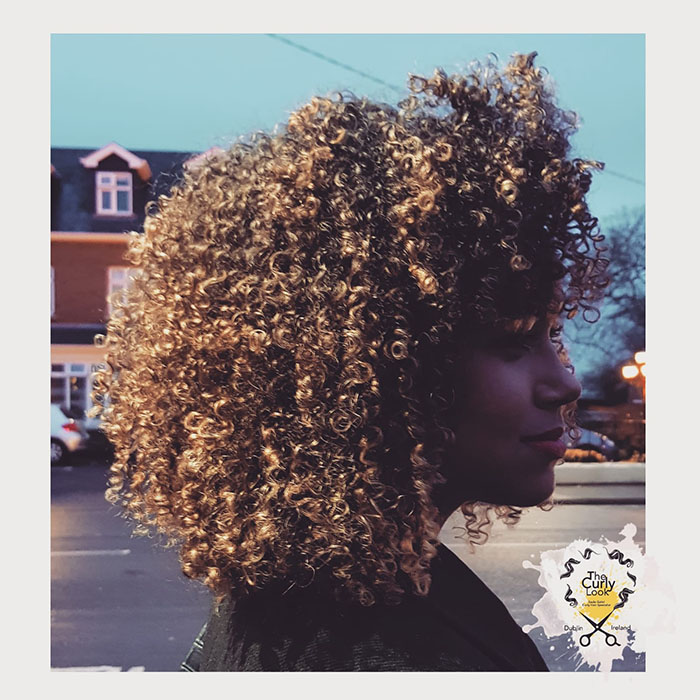
Photo courtesy of Saulo.
Healthy frizz is a thing. If your curls are healthy, you don’t need to disdain frizz anymore, because you know where the frizz comes from.
Do you have healthy frizz? You can embrace it in all its glory. You can wear your healthy frizz with pride, in the same way you can wear frizz-free curls. The power of choice is completely yours.
Are you ready to embrace your healthy frizz? I’d love to hear your thoughts in the comments below.
